 專題
專題


在ACCA考試中,F5階段“Relevant cost 相關成本”是一個每年都會出現在考卷上的高頻考點,同時該考點也比較容易混淆,接下來會計網今天就跟大家進行解析。

1. Definition
Relevant costs arefuture incremental cash flows. 注意,這邊一定要同時滿足這三點:未來發生、增量的、現金流。只要有一個不滿足,都不能算是相關成本。
反例:非相關成本一定滿足至少其中之一
(i) Sunk cost—過去發生的
(ii) Depreciation—不是現金流
(iii) General fixed overheads—不是增量的
2.如何判斷?
A relevant cost is a future cash flow arising as a direct consequence of a decision.同時相關成本還要求,一定是和決策相關的,由于一個決定,導致未來會發生增量的現金流。比如說Committed costs是過去決定,未來發生的成本。那么和現在的決定是沒有關系的。
3. 具體運用
A special cutting machine will have to be hired for three months. Hire charges for this machine are $75 per month, with a minimum hire charge of $300.相關成本是300,因為最小要付出的現金流是300。
4. 難點(1)--Material
問:是否在倉庫現有?
如果答:NO,那么相關成本就是從現在市場購買的價值 ----end
如果答:有
追問: Regularly used?
答:Yes,那么相關成本還是市場購買價值
答:NO,RC=Higher of 1.Value in other use 2. Scrap value
5. 難點(2)--Labour
問:Spare Capacity?
如果答:Yes,相關成本是0 --end
如果答:NO
追問:Additional labour hour can be obtained ?
答:Yes,相關成本= Extra labour cost
答:No,相關成本= Total Labour cost + lost contribution
來源:ACCA學習幫
在ACCA考試中,“Borrowing cost”每年都會出現在試卷題目里,同時也是ACCA考試一個重難點之一。接下來會計網就跟大家講解Borrowing cost借款利息的確認和計算,希望有所幫助。

01、Qualifying asset
首先正常借款利息的確認分錄為:
DR finance cost
CR loan/interest payable/cash
但是如果是為了建造qualifying asset 而發生的借款利息支出可以直接計入資產成本,即分錄為
DR asset
CR loan/interest payable/cash
那什么是qualifying asset 呢?
Qualifying asset 是企業需要花很長時間才可以使用或者銷售的資產,也就是要花費很長時間才可以建造完成的資產。
對于財務費用,計算公式:財務費用=負債*實際利率*時間
02、時間的確定
因此我們先來討論第一個問題:即時間的確定,對于資本化的開始時間,我們在以下三個開始時間中取最遲:
1) 開始建造
2) 開始借款
3) 獲得許可證
比如,企業在X1.1.1向銀行借了一筆300K 8%的款項,在X1.3.1開始建造資產,那么資本化的開始時間就是X1.3.1;
建造中途,如果建造項目被中斷或暫停,那么資本化需要相應暫停。比如X1.6.1-X1.7.31這兩個月員工罷工,工程無法繼續,那么資本化需要暫停2個月。
最后當項目被建造完成時,資本化被終止,比如X1.12.31項目建造完成,那么資本化終止。
因此在我們這個例子中,本期資本化的借款利率金額=300K*8%*(3/12+5/12), 即只有8個月的利息支出可以資本化。
03、利率的確定
接下來我們來討論公式中第二個數字,即利率的確定
既然是借款就分為兩類,一類是為了建造該資產專門借的一筆款項,即專項借款;一類是企業目前的資產池子中的借款,即一般借款。
對于專項借款的處理比較簡單,比如企業為了建造一個資產企業借了一筆利率為8%,金額為500K的款項,資本化的時間是9個月,那么資本化的借款成本=500K*8%*9/12=30K
對于一般借款的處理比較復雜,我們來看下面這個例子:
下表給出企業一般借款的情況

先來分析一下這個表格,其中利率為10%的借款期初X8.1.1金額是120,期末X8.12.31金額是120,說明120的負債從期初一直存在到期末,同理金額為80的負債也是從期初存在到期末。
因此如果從這個資產池子拿錢投入Qualifying asset的建造,那么我們用10%的利率是不合適的,用8.5%的利率也是不合適的。
所以我們要計算出他們的加權平均利息,即10%*120/(120+80) + 8.5%*80/(120+80)=9.4%
所以應該按照9.4%作為利率計算借款成本
下面我們來看一道例題題干的分析:
Golden Co had borrowed $4.8 million to finance the building of a building. Construction is expected to take three years. The loan was drawn down and incurred on 1 January 20X5 and work began on 1 April 20X5. $2 million of the loan was not utilized until 1 June 20X9 so Golden was able to invest it until needed.
Golden Co is paying 6% on the loan the can invest surplus funds at 4%.
Calculate the borrowing costs to be capitalised for the year ended 31 December 20X5 in respect of this project.
首先公司在X5.1.1借款4.8m,建造工作在X5.4.1開始,因此借款利率開始資本化的時間是X5.4.1,期末是X5.12.31,因此有9個月的利息需要資本化。
其中有2m的支出直到X9.6.1才開始使用,因此2m在4.1-6.1這段期間可以爭取投資收入,抵減資本化的借款支出
因此本年資本化的金額為4.8m*6%*9/12-2m*4%*2/12=0.203m
謝謝大家,今天的講解到此結束,祝大家A考順利!
來源:ACCA學習幫
在ACCA考試中,有一個常考點是值得考生們去關注的,它就是Equivalent Annual Cost method(資產重置決策),這個知識不僅可能會考到客觀題,也會有可能考到大題。下面我們來看看吧。
對于資產重置類型題目的考察,主要是兩種形式:
一種是替換舊資產時有兩種資產選擇,但由于這兩種資產壽命各不同,無法直接對比選擇。比如替換舊設備有兩個選擇,一個是A設備,總成本$1000,使用壽命10年;一個是B設備,總成本$5000,使用壽命5年。此時無法直接拿$1000和$5000對比。
另一種則是舊資產的更換頻率,按幾年更換一次較為合適。比如可以3年或者5年進行更換,但由于對應發生的總成本可能也不同。所以此時也無法直接對比。
這兩種情況本質其實都是由于年限不同,無法直接按成本進行對比。所以就會采用接下來我們要說的等額年金法EAC ( Equivalent Annual Cost method ) 來計算對比。這種方法不僅解決了年限不同的限制,即將其均攤切換到每一年的成本現值,這樣就能在相同周期內(一年為基準)按照誰小選誰的原則。同時也考慮了貨幣的時間價值。所以結果會更加客觀準確。
這種方法會有幾個假設前提:
一是不管選擇哪種方案,它只影響成本,對經營活動成本和效率無影響。
二是項目可以無限重置,一旦完成置換之后,一直會沿用下去,不考慮下次決策問題。
計算步驟:
第一步:
計算每一個置換方案成本的凈現值。
第二步:
將成本的凈現值除以對應的年金折現系數得到每年的等額年金成本。
公式:EAC=PV of Cost / Annuity Factor
(類比不同項目周期收益:如果兩個項目的NPV不同,項目的周期也不同。進行對比選擇時,按照同樣思路,將這兩個項目調整到同一時間維度,即切換到每年等額年收益即可進行對比。
此時公式:Equivalent Annual Benefit (EAB)=NPV of Project/Annuity Factor)
真題2018 S/D Q31:
Melanie Co is considering the acquisition of a new machine with an operating life of three years. The new machine could be leased for three payments of $55,000, payable annually in advance.
Alternatively, the machine could be purchased for $160,000 using a bank loan at a cost of 8% per year. If the machine is purchased Melanie Co will incur maintenance costs of $8,000 per year, payable at the end of each year of operation. The machine would have a residual value of $40,000 at the end of its three-year life
Melanie Co’s production manager estimates that if maintenance routines were upgraded the new machine could be operated for a period of four years with maintenance costs increasing to $12,000 per year, payable at the end of each year of operation. If operated for four years the machine’s residual value would fall to $11,000. Taxation should be ignored.
Required:
Using a discount rate of 10%, calculate the equivalent annual cost of purchasing and operating the machine for both three years and four years, and recommend which replacement interval should be adopted.
因為題目問題問的是通過EAC計算,讓判斷按3年還是按4年置換。所以能確定的前提是購買資產,第1段的租賃費用$55,000在此問無用。
第2段承接第1段對應置換的新設備周期是3年,初始投資成本$160,000,這筆資金通過借款融資而來,借款利率具體要求是讓按10%,不是原來題目中的8%。之后每年年末發生$8,000的維修費用,第3年末殘值收入$40,000。
第3段信息對應設備周期是4年,依然通過借款融資初始投資成本$160,000,之后每年年末發生$12,000維修費用,第4年末殘值收入$11,000。忽略稅的影響。
所以思路就是分別把周期為3年和4年對應的成本的凈現值計算出來,除以對應年金折現系數得到等額年金成本進行對比:
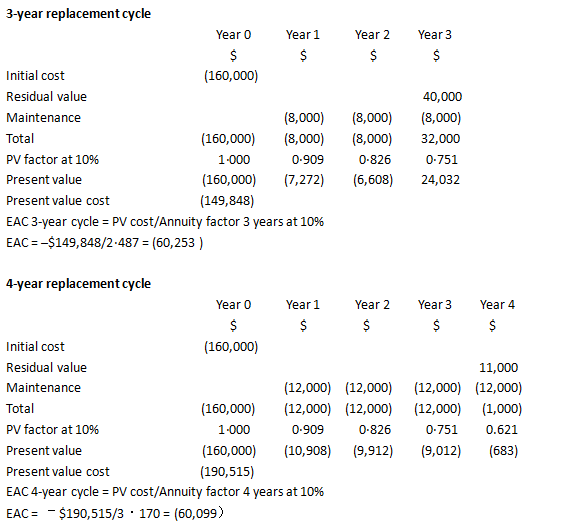
通過EAC對比,發現周期為4年的資產等額年成本小于3年的。所以當然選擇按照每4年進行資產置換。
Recommendation The machine should be replaced every four years as the equivalent annual cost is lower.
來源:ACCA學習幫
在往年的ACCA考試里,同樣有一個常考點經常會在試卷題目中出現,這考點就是“Borrowing cost”(借款利息),今天會計網就跟大家講解借款利息的確認和計算,希望有所幫助。

01、Qualifying asset
首先正常借款利息的確認分錄為:DR finance cost CR loan/interest payable/cash
但是如果是為了建造qualifying asset 而發生的借款利息支出可以直接計入資產成本,即分錄為DR asset CR loan/interest payable/cash
那什么是qualifying asset 呢?
Qualifying asset 是企業需要花很長時間才可以使用或者銷售的資產,也就是要花費很長時間才可以建造完成的資產。
對于財務費用,計算公式:財務費用=負債*實際利率*時間
02、時間的確定
因此我們先來討論第一個問題:即時間的確定,對于資本化的開始時間,我們在以下三個開始時間中取最遲:
1) 開始建造
2) 開始借款
3) 獲得許可證
比如,企業在X1.1.1向銀行借了一筆300K 8%的款項,在X1.3.1開始建造資產,那么資本化的開始時間就是X1.3.1;
建造中途,如果建造項目被中斷或暫停,那么資本化需要相應暫停。比如X1.6.1-X1.7.31這兩個月員工罷工,工程無法繼續,那么資本化需要暫停2個月。
最后當項目被建造完成時,資本化被終止,比如X1.12.31項目建造完成,那么資本化終止。
因此在我們這個例子中,本期資本化的借款利率金額=300K*8%*(3/12+5/12), 即只有8個月的利息支出可以資本化。
03、利率的確定
接下來我們來討論公式中第二個數字,即利率的確定既然是借款就分為兩類,一類是為了建造該資產專門借的一筆款項,即專項借款;一類是企業目前的資產池子中的借款,即一般借款。
對于專項借款的處理比較簡單,比如企業為了建造一個資產企業借了一筆利率為8%,金額為500K的款項,資本化的時間是9個月,那么資本化的借款成本=500K*8%*9/12=30K
對于一般借款的處理比較復雜,我們來看下面這個例子:
下表給出企業一般借款的情況

先來分析一下這個表格,其中利率為10%的借款期初X8.1.1金額是120,期末X8.12.31金額是120,說明120的負債從期初一直存在到期末,同理金額為80的負債也是從期初存在到期末。
因此如果從這個資產池子拿錢投入Qualifying asset的建造,那么我們用10%的利率是不合適的,用8.5%的利率也是不合適的。
所以我們要計算出他們的加權平均利息,即10%*120/(120+80) + 8.5%*80/(120+80)=9.4%
所以應該按照9.4%作為利率計算借款成本
下面我們來看一道例題題干的分析:
Golden Co had borrowed $4.8 million to finance the building of a building. Construction is expected to take three years. The loan was drawn down and incurred on 1 January 20X5 and work began on 1 April 20X5. $2 million of the loan was not utilized until 1 June 20X9 so Golden was able to invest it until needed.
Golden Co is paying 6% on the loan the can invest surplus funds at 4%.
Calculate the borrowing costs to be capitalised for the year ended 31 December 20X5 in respect of this project.
首先公司在X5.1.1借款4.8m,建造工作在X5.4.1開始,因此借款利率開始資本化的時間是X5.4.1,期末是X5.12.31,因此有9個月的利息需要資本化。
其中有2m的支出直到X9.6.1才開始使用,因此2m在4.1-6.1這段期間可以爭取投資收入,抵減資本化的借款支出因此本年資本化的金額為4.8m*6%*9/12-2m*4%*2/12=0.203m
來源:ACCA學習幫
“兩會”后,中國稅務改革步入快車道。4月4日,財政部、國家稅務總局發文確定從5月1日起,一般納稅人原17%和11%的稅率,分別下降為16%和10%,其他稅率(或征收率)維持不變。企業慶祝減稅的同時,也意識到了稅率變化可能帶來的一系列問題。
增值稅是企業日常運轉中接觸到最多的稅種。增值稅新時代下,企業要面對稅局的“新增值稅納稅申報比對規程”和大數據全控下的新征管模式。新政頻出、征管收緊,合同、票據、增值稅繳納及后續管理,環環相扣,合同管理與票據處理的完美結合,可以最大限度的化解企業增值稅負及納稅風險。在這樣的情況,如果您的日常業務中有疑惑:
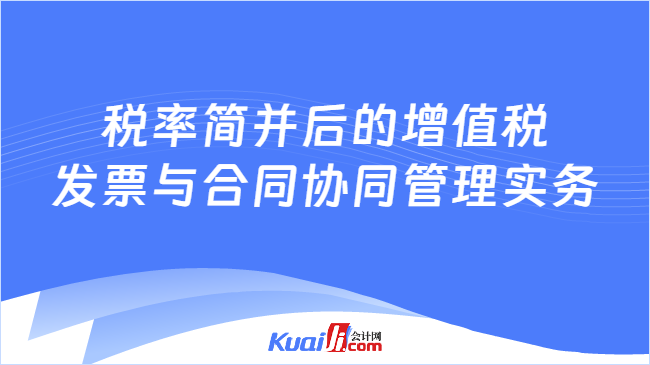
?“簡并”稅率對“我”企業實際稅負有多少影響?
?降低增值稅稅率、幅度這么大,上下游該怎么處理降稅過渡期的合同簽訂、修改和發票開具和取得,核心原則您知道嗎?
?增值稅申報比對會對我們企業帶來哪些風險?
?過渡期合同、銷售額、稅都對不上,怎么辦?
新政頻出、環境頻變下的增值稅全套問題,交給上海財經大學EDP中心。一次體驗統統解決,全方位解析關于增值稅處理的種種疑惑,助力企業財務人把握增值稅疑難,快速搞定“簡并稅率”后的增值稅要點難點,規避風險,快速應對變化。
【強化新政認識】新政頻出,解讀新政變化,快速了解應對之道。
【穿透原理實質】解析增值稅票據管理之道,觀摩本質優化供應鏈條
【解析實務困惑】層層攻破增值稅涉稅難點及申報管理,把控操作風險
【統籌合同要點】合同、票據、增值稅統籌合一,優化企業增值稅稅負
◆財務經理、財務主管
◆稅務經理、稅務主管
◆財務專員、會計
◆稅務專員、稅務顧問
一、稅率“簡并”進行時,增值稅全面落地 | 二、采購鏈增值稅、發票、合同重點事項 |
●增值稅“減并”稅率新政 ●國稅總局〔2018〕28號:《企業所得稅稅前扣除憑證管理辦法》 ●財稅〔2018〕32號:《財政部稅務總局關于調整增值稅稅率的通知》 ●財稅〔2018〕33號:關于統一增值稅小規模納稅人標準的通知 ●國稅總局〔2018〕6號公告:關于增值稅一般納稅人登記管理若干事項的公告
| ●企業采購環節中的供應商應如何選擇 ●為了降低稅率從供應商(或服務提供方)取得發票稅率越高越好嗎? |
三、技術鏈增值稅、發票、合同重點事項 | 四、資產鏈增值稅、發票、合同重點事項 |
●研發費用、技術轉讓增值稅、合同涉稅問題 ●官宣的“技術流”大起底
| ●跨期購買辦公樓并獲得增值稅專用發票,能抵扣嗎? ●分支機構抬頭的增值稅進項發票可以在總機構抵扣進項稅額嗎? ●不動產租賃與服務提供的選擇與運用 ●借款采購設備涉稅風險的合同該如何設置? ●房屋租賃中設備與土地的分割與選擇 |
五、融資鏈增值稅、發票、合同重點事項 | 六、人資鏈增值稅,發票,合同重點事項 |
●金融企業借款稅務處理 ●民間借貸的稅務處理 ●關聯方無息借貸合同的稅收風險防范 ●混合性投資 ●統借統還免增值稅 ●同期利率的掌握 ●融資售后回租費用是利息費用還是租賃費用?取得何種發票? ●房地產存在“無票”抵扣+扣除,怎么處理才合規? ●企業不可抵扣的項目應取得何種發票 | ●企業職工薪酬與福利支出的涉稅問題與票據管理 ●境外支付合同關于扣繳稅款的約定 ●房屋租賃涉稅與合同的免租期的處理 |
七、營銷鏈增值稅,發票,合同重點事項 | 八、費用鏈增值稅,發票,合同重點事項 |
●預付卡業務的涉稅風險 銷售預付卡開具不征稅發票嗎?持卡人實際消費可以取得發票嗎?預付卡可以取得專票嗎 ●增值稅視同銷售、“買贈”問題終極解決 ●折扣開票有何風險?銷售折扣如何處理?清單折扣如何處理? ●紅字發票、作廢發票、丟失發票該如何處理? ●商品購銷合同中增值稅涉稅風險的防控與處置
| ●銀行利息費用手續費等,企業是否必須取得發票才能稅前扣除? ●簡并稅率政策后開具新稅率發票、以原稅率進項票:是否可以抵扣? ●簡易征稅項目企業發生水電費轉售業務如何計稅? ●過路過橋費進項稅額的抵扣 ●發出商品或已提供服務,由于未收款、未開票、未申報收入,應如何定性處理? ●由購買方承擔的貼現費用如何發票稅務處理 ●企業遇到不征稅增值稅的業務可以開具發票嗎 |
九、費用鏈增值稅,發票,合同重點事項 | |
●差額征稅業務如何開具增值稅專用發票?(含房地產企業、總分包業務、勞務派遣業務等) ●物業公司代收水電費涉稅問題如何處理? ●會議費,能和餐費合二為一嗎? ●納稅人支付境外費用,如何計算扣繳增值稅? ●超經營范圍業務如何開具發票? ●企業購銷售違約金票據管理的選擇——并不是所有款項都要開具發票 ●項目掛靠模式的選擇——項目掛靠的票據及稅收風險界定 ●資金池業務收取的利息收入也要開具發票嗎?集團內收取利息如何操作才能免增值稅? ●房地產存在“無票”抵扣+扣除,怎么處理才合規? ●企業不可抵扣的項目應取得何種發票 ●企業取得不可抵扣項目的發票一定要普票嗎? ●什么情況下不可低扣項目也一定要取得專票? ●費用類在合同條款規劃時有何注意事項? | |
想了解最新詳細課程資料,點擊網頁的在線咨詢圖標,與在線老師交流。
在ACCA考試中,Throughput Accounting一直都是PM科目中比較難理解的考點,對此,會計網今天就跟大家詳解這個重難點內容,我們來看看吧。

01、Background
Just in time(JIT):JIT是一種管理理念。在JIT下,企業注重運營效率,目標是生產所需要的產品,而不是庫存。在JIT管理理念下,一般使用Throughput accounting進行成本核算。
Key points:JIT的特征是不喜歡存貨,按照訂單生產和采購。
Theory of constraints(TOC):Bottleneck determines the whole production capacity of the organisation.
Key points:
a. External & Internal:瓶頸可以是內部的也可以是外部的,但是外部的難以管理。
b. There is one and only one bottleneck:有且僅有一個瓶頸。
c. Five steps for dealing with a bottleneck activity(identify-exploit-subordinate-elevate-return)找到瓶頸-充分利用-其他流程協作-提升瓶頸-重新定義新的瓶頸。
02、Throughput
Assumption:假設短期內只有原材料成本是變動成本
Calculation of profit

Key points:
a. Value of inventory=Material cost
b. Throughput=Sales revenue of sales volume- Direct material purchase costs,所以要想throughput最大化必須要讓采購進來的存貨盡快銷售出去產生銷售收入。
c. 在TA中,只有material cost是變動成本,其余的包括labour cost都是固定成本,寫法有:Operational expenses/Total Factory costs/Conversion cost/Fixed cost,但是需要注意Factory costs≠Factory overhead,Factory overhead只是間接的固定成本,還需要在TA中特殊存在的直接的固定成本,通常就是labour cost (factory overhead+labour cost=factory costs)。
03、Throughput accounting ratio(TPAR)
首先當然是讓大家瑟瑟發抖的公式要會背:

Key points:
1. 計算TPAR
Return per factory hour需要注意分子和分母的單位都是per unit(單位金額、單位數量)
Cost per factory hour需要注意分子分母都是total(總金額、總數量),如果是同一個工廠里面生產的產品,Cost per factory hour是相等的。
2. 提升TPAR
提升TPAR的分子Return per factory hour:
分子:(Sales revenue per unit-material cost per unit)
分母:Bottleneck resources per unit ↓,每一單位使用的瓶頸資源減少,即瓶頸資源使用效率提升。
減少TPAR的分母Cost per factory hour:
分子:Total factory cost ↓,也就是總的固定成本減少。
分母:Total bottleneck resources ↑,總的可使用瓶頸資源增加,也就是產能增加。
做題步驟:1.找到瓶頸;2.分析瓶頸流程的TPAR
3. 最優生產計劃:TPAR越大越好。
做題步驟:
Step 1:找到瓶頸資源;
Step 2:計算TPAR(如果是同一個工廠內生產的產品可以直接通過return per factory hour進行比較)
Step 3:按照計算出來的TPAR或者return per factory hour進行排序,越大的越先生產。(如果有已經簽了合同的產品,優先滿足合同,再考慮TPAR的生產計劃)
04、Advantages & Disadvantages
Advantages:
1)reduce inventory holding cost減少存貨持有量
2)value for money allocation of scarece resource對稀缺資源的價值分配
3)encourage short-term maximization鼓勵關注短期最大化
4)cost benefit analysis成本效益分析
Disadvantages:
1)short-termism過于短視化
2)risk of stock out缺貨風險
來源:ACCA學習幫
2020年ACCA12月考季臨近,根據考生所反饋,大家在備考過程中碰到問題最多的就是成本技術-Throughput Accounting這個考點內容,對此,會計網今天就為大家詳解下這部分內容。

同學們需要從四個方面考慮,Background、Throughput、TPAR、Advantages & Disadvantages
01、Background
? Just in time(JIT):JIT是一種管理理念。在JIT下,企業注重運營效率,目標是生產所需要的產品,而不是庫存。在JIT管理理念下,一般使用Throughput accounting進行成本核算。
Key points:JIT的特征是不喜歡存貨,按照訂單生產和采購。
? Theory of constraints(TOC):Bottleneck determines the whole production capacity of the organisation.
Key points:
a. External & Internal:瓶頸可以是內部的也可以是外部的,但是外部的難以管理。
b. There is one and only one bottleneck:有且僅有一個瓶頸。
c. Five steps for dealing with a bottleneck activity(identify-exploit-subordinate-elevate-return)找到瓶頸-充分利用-其他流程協作-提升瓶頸-重新定義新的瓶頸。
02、Throughput
Assumption:假設短期內只有原材料成本是變動成本
Calculation of profit
Key points:
a. Value of inventory=Material cost
b. Throughput=Sales revenue of sales volume- Direct material purchase costs,所以要想throughput最大化必須要讓采購進來的存貨盡快銷售出去產生銷售收入。
c. 在TA中,只有material cost是變動成本,其余的包括labour cost都是固定成本,寫法有:Operational expenses/Total Factory costs/Conversion cost/Fixed cost,但是需要注意Factory costs≠Factory overhead,Factory overhead只是間接的固定成本,還需要在TA中特殊存在的直接的固定成本,通常就是labour cost (factory overhead+labour cost=factory costs)。
03、Throughput accounting ratio(TPAR)
? 首先當然是讓大家瑟瑟發抖的公式要會背:
Key points:
1. 計算TPAR
Return per factory hour需要注意分子和分母的單位都是per unit(單位金額、單位數量)
Cost per factory hour需要注意分子分母都是total(總金額、總數量),如果是同一個工廠里面生產的產品,Cost per factory hour是相等的。
2. 提升TPAR
提升TPAR的分子Return per factory hour:
分子:(Sales revenue per unit-material cost per unit)↑
分母:Bottleneck resources per unit ↓,每一單位使用的瓶頸資源減少,即瓶頸資源使用效率提升。
減少TPAR的分母Cost per factory hour:
分子:Total factory cost ↓,也就是總的固定成本減少。
分母:Total bottleneck resources ↑,總的可使用瓶頸資源增加,也就是產能增加。
做題步驟:1.找到瓶頸;2.分析瓶頸流程的TPAR
3. 最優生產計劃:TPAR越大越好。
做題步驟:
Step 1:找到瓶頸資源;
Step 2:計算TPAR(如果是同一個工廠內生產的產品可以直接通過return per factory hour進行比較)
Step 3:按照計算出來的TPAR或者return per factory hour進行排序,越大的越先生產。(如果有已經簽了合同的產品,優先滿足合同,再考慮TPAR的生產計劃)
04、Advantages & Disadvantages
Advantages:
1)reduce inventory holding cost減少存貨持有量
2)value for money allocation of scarece resource對稀缺資源的價值分配
3)encourage short-term maximization鼓勵關注短期最大化
4)cost benefit analysis成本效益分析
Disadvantages:
1)short-termism過于短視化
2)risk of stock out缺貨風險
以上就是我們Throughput Accounting的常考知識點,建議大家計算部分該背的背一背,文字部分主要靠理解,記住關鍵詞。但是光靠看肯定是不行的,還需要大家動動手做做題,反復鞏固才可以順利通過考試哦~
來源:ACCA學習幫
國際類證書含金量高,但是要考下證書也要費一番功夫,很多人都選擇報培訓班,很多考生就會多考慮一下報考費用,和培訓班的費用,自己能不能承受得起,考下這張證書到底有什么實質性的效益,今天小編就來和大家說一說AIA證書。
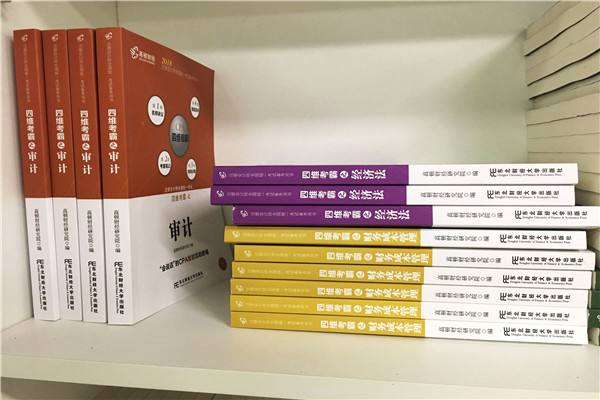
(一)AIA整個考試需要多少報考費用?
這個根據個人情況不同可能會稍有差別,因為培訓課程的費用是按照科目來收費的,不同學歷考生的免考科目不一樣,所以會使整個費用有差別。在一般情況下需要兩萬塊錢左右(包括培訓考試費用),考試時間大概需要一年半到兩年時間。
(二)考下AIA證書后有什么實質性的效益呢?
其實最直接的就是能夠在面試求職的時候能夠證明自己的財務專業知識水平和財務專業的英語水平能力,在學習的同時也可以擴大專業視野和以后行業內的人脈,可以有更多優勢,也可以在之后的職位上有更多的機會和選擇,還有考試通過工作后能獲得的收益。當持有AIA證書的你和其他人一起面試的時候,你所擁有的無形資產,能給你的人生道路和以后的職業選擇多更多的機會。
中國經濟高速發展,全球經濟快速一體化,中國也迫切需要一批懂得國際化會計準則的人才,在全球金融危機中更加凸顯了財務人員的重要性,AIA必將得到中國企業的廣泛認可和規避風險的護身符。
PMP考試中有不少英文縮寫的專用名稱,為了方便考生更好地記憶考試知識點,這里將PMP常見的英文縮寫進行整理如下:

AC 實際成本 actual cost
ACWP 已完工作實際成本 Actual Cost for Work Performed
BAC 完工預算 budget at completion
CCB 變更控制委員會 change control board
COQ 質量成本 cost of quality
CPAF 成本加獎勵費用合同 cost plus award fee contracts
CPFF 成本加固定費用合同 cost plus fixed fee contract
CPI 成本績效指數 cost performance index
CPIF 成本加激勵費用合同 cost plus incentive fee contract
CPM 關鍵路徑法 critical path activity
CV 成本偏差 cost variance
EAC 完工估算 estimate at completion
EF 最早完成日期 early finish date
EMV 預期貨幣價值 expected monetary value
ES 最早開始日期 early start date
ETC 完工尚需估算 estimate to complete
EV 掙值 earned value
EVM 掙值管理 earned value management
FF 完成到完成 Finish-to-Finish
FFP 固定總價合同 Firm-Fixed-Price Contract
FMEA 失效模式與影響分析 Failure Mode and Effect Analysis
FP-EPA 總價加經濟價格調整合同 Fixed Price with Economic Price Adjustment Contracts
FPIF 總價加激勵費用合同 Fixed Price Incentive Fee Contract
FS 完成到開始 Finish-to-Start
IFB 投標邀請書 Invitation for Bid
LF 最晚完成日期 Late Finish Date
LOE 支持型活動 Level of Effort
LS 最晚開始日期 Late Start Date
OBS 組織分解結構 Organizational Breakdown Structure
PDM 緊前關系繪圖法 Precedence Diagramming Method
PMBOK 項目管理知識體系 Project Management Body of Knowledge
PV 計劃價值 Planned Value
QFD 質量功能展開 Quality Function Deployment
RACI 執行、負責、咨詢和知情矩陣 Responsible、Accountable、Consult、Inform Matirx
RAM 責任分配矩陣 Responsibility Assignment Matrix
RBS 風險分解結構 Risk Breakdown Structure
RFI 信息邀請書 Request for Information
RFP 建議邀請書 Request for Proposal
RFQ 報價邀請書 Request for Quotation
SF 開始到完成 Start-to-Finish
SOW 工作說明書 Statement of Work
SPI 進度績效指數 Schedule Performance Index
SS 開始到開始 Start-to-Start
SV 進度偏差 Schedule Variance
SWOT 優勢、劣勢、機會與威脅 Strengths,Weaknesses,Opportunities,Threats
T&M 工料 Time and Material
WBS 工作分解結構 Work Breakdown Structure
從2021年的cma考試來看,無論是選擇題還是簡答題,題目都極其貼近實務操作,難度較大,因此考生復習時需要著重把握重點知識,今天會計網將為大家詳細介紹公司重組的相關考點。

cma考點之公司重組
合并的定義:
合并是指兩家或兩家以上的企業結合在一起,組建成一家新企業兼并指的是一家企業以收購的方式獲取另一家企業的控制權。
原因:實現協同力
協同力是指,這兩家合并之后所能產生的效益大于兩家企業獨立經營所產生的效益。
(1)收入上升:營銷利得、戰略收益、市場與壟斷力量;
(2)成本下降:規模經濟、縱向一體化的經濟效益、技術轉讓、資源互補、淘汰無效率的管理層;
(3)稅收利得:經營凈損失、舉債能力、剩余資金;
(4)降低資本成本。
杠桿收購:
杠桿收購是一種主要以債務融資的方式收購一家公司、子公司或投資者集團分部的所有資產或股票管理層收購是指收購方為管理層的一種杠桿收購
相關例題分析:
在法律上,商業合并可以被劃分為兼并、合并或收購。下列哪項描述指的是兼并?
A.存續的公司是合并企業中的一家
B.存續的公司不是合并企業中的任何一家
C.建立的投資方與被投資方之間的關系
D.建立的母公司與子公司之間的關系
答案:A
解析:聯合兩家或更多家公司,兼并后只有一家公司在法律意義上繼續存在,其他公司均不存在。B選項指合并,C、D選項指收購。
China’s rise as the most important global M&A market and the almost dramatic increase of Chinese outbound M&A activities signals a sea change of opportunities and pitfalls.As witnessed by the landmark deal between Lenovo and computer giant IBM in 2005,M&A transactions are expected to gather pace as China prepares itself to become an economic superpower.While the central government has somewhat revamped opaque regulations,Mergers&Acquisitions in China:Law and Practice lends much needed clarity by providing a structured introduction to the legal aspects of China’s M&A regime.
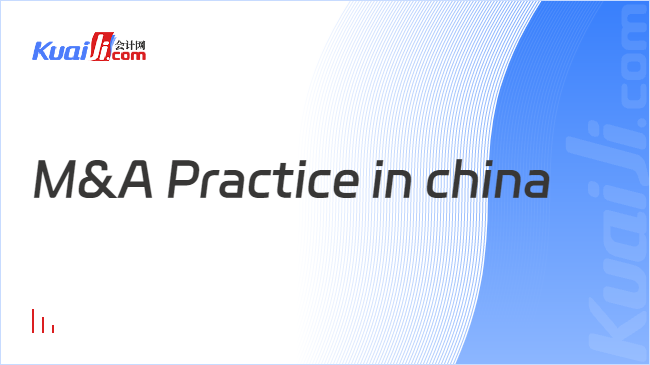
The downturn may present many acquisition opportunities,but which fit best with your long-term business strategy?Leading strategic planners will describe how to develop an effective investment strategy,identify potential targets,and efficiently evaluate opportunities.Through this training you will explore how to identify and assess strategic targets,evaluate investment opportunities,navigate today’s deal hurdles,and successfully integrate an acquired business to deliver real results and real value.
Ensuring the realization of the M&A purpose
Deeply analysis on the hottest topics of M&A
Understanding the obstacles of Chinese corporations to do the strategic merge&acquisition
Learning the laws and regulations involving in the merge&acquisition activities
Controlling the risks when formulating a merge&acquisition strategy
Developing M&A deal negotiation skills
Gaining knowledge of target sourcing and driving success in the down market
Advancing in evaluation models and methods
Improving assessment of risk
Obtaining strategies of finance in M&A
CEO,VP,Director,GM,Head and Manager of
Strategic Planning、Finance
Corporate/Business Development
M&A/Legal
Corporate development strategy vs.M&A strategy
Stable development strategy
Defense strategy
M&A categories
Transaction valuation
M&A Financing methods
Case studies
Ensuring the new business conforms to company's objectives
Differentiating Transaction Success&Deal Success
Understanding the main factors for value creation
Reorganizing,reconstructing and adjusting the business system
Recommendation for PMI(Post Merger Integration)strategy
Strategic M&A and corporate core competitiveness
What is the corporate core competitiveness
Foster and enhance the core competitiveness of the strategic thinking
Why should we enhance the core competitiveness
Lacking of the core competitiveness
Cultivating the core competitiveness through corporate M&A
Two methods of obtaining the core competitiveness
Core competitiveness has been the sourcing power of merge activities
Analyzing the key considerations before entering into cross border M&A
Defining key factors that play a significant role in M&A flows
Managing multi-jurisdiction due diligence
Knowledge of geographic and industrial sectors have proven most attractive and the places future opportunities lie
Understanding cultural considerations in cross border deals
Decision making process of strategic M&A
Characteristics of strategic M&A
M&A decision making process
Opportunity analysis stage
Preliminary analysis stage
Detailed analysis stage
Evaluation and decision making stage
Target selecting
Understanding the differences between business valuation on local and international M&A transactions and negotiating the best deal
What are the differences of business valuation when merging or acquiring local companies and international companies?
Similar area,finance,legal,IP,HR,etc,but with different areas of concerns
Difference in accounting,legal/IP,labor issues
Key considerations in evaluating a target company
Acquirer's business strategy vs.target business
Products&marketing
Identify synergy&improvement
Management team
Middle management
Corporate Culture
Optimizing a valuation----How to reach common understanding of the business valuation and transaction price on both sides of the fence?
Communication
Cultural factors
Trust
Control misunderstanding and misleading information
Case studies-Lessons learned
Examining the synergies after strategic M&A-Case study from listed companies
Management synergy
Operating synergy
Diversification synergy
Financial and tax synergy
Intangible assets synergy
Case Study-Advancing the negotiation and closing the deal
Negotiating tactics:How to position your company from the opening offer to final agreement
Using due diligence to enhance your advantages
Understanding the strengths and the weaknesses in the other side's position
Identifying the key value drivers
Management Buyout
The development of MBO
The purpose of MBO
The financing method of MBO
The pricing strategy of MBO
Case study
想了解最新詳細課程大綱及資料,點擊網頁左側的在線咨詢圖標,與在線老師交流咨詢領取。
What do you want to achieve or avoid?The answers to this question are objectives.How will you go about achieving your desire results?The answer to this you can call strategy.
Managing changing market conditions is never easy,but turmoil also presents unique opportunities to acquire previously unobtainable targets.However,acquirers must understand today’s credit limitations,new competition and investment legislation,increasing shareholder activism,and merger and acquisition(M&A)litigation issues.
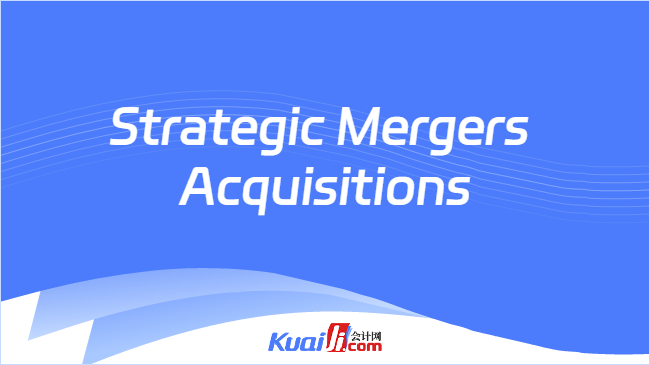
The downturn may present many acquisition opportunities,but which fit best with your long-term business strategy?Leading strategic planners will describe how to develop an effective investment strategy,identify potential targets,and efficiently evaluate opportunities.Through this training you will explore how to identify and assess strategic targets,evaluate investment opportunities,navigate today’s deal hurdles,and successfully integrate an acquired business to deliver real results and real value.
Ensuring the realization of the M&A purpose
Deeply analysis on the hottest topics of M&A
Understanding the obstacles of Chinese corporations to do the strategic merge&acquisition
Learning the laws and regulations involving in the merge&acquisition activities
Controlling the risks when formulating a merge&acquisition strategy
Developing M&A deal negotiation skills
Gaining knowledge of target sourcing and driving success in the down market
Advancing in evaluation models and methods
Improving assessment of risk
Obtaining strategies of finance in M&A
CEO,VP,Director,GM,Head and Manager of
Strategic Planning、Finance
Corporate/Business Development
M&A/Legal
Corporate development strategy vs. M&A strategy
- Stable development strategy
- Defense strategy
- M&A categories
- Transaction valuation
- M&A Financing methods
- Case studies
Ensuring the new business conforms to company's objectives
- Differentiating Transaction Success & Deal Success
- Understanding the main factors for value creation
- Reorganizing, reconstructing and adjusting the business system
- Recommendation for PMI (Post Merger Integration) strategy
Strategic M&A and corporate core competitiveness
- What is the corporate core competitiveness
- Foster and enhance the core competitiveness of the strategic thinking
- Why should we enhance the core competitiveness
- Lacking of the core competitiveness
- Cultivating the core competitiveness through corporate M&A
- Two methods of obtaining the core competitiveness
- Core competitiveness has been the sourcing power of merge activities
Analyzing the key considerations before entering into cross border M&A
- Defining key factors that play a significant role in M&A flows
- Managing multi- jurisdiction due diligence
- Knowledge of geographic and industrial sectors have proven most attractive and the places future opportunities lie
- Understanding cultural considerations in cross border deals
Decision making process of strategic M&A
- Characteristics of strategic M&A
- M&A decision making process
- Opportunity analysis stage
- Preliminary analysis stage
- Detailed analysis stage
- Evaluation and decision making stage
- Target selecting
Understanding the differences between business valuation on local and international M&A transactions and negotiating the best deal
- What are the differences of business valuation when merging or acquiring local companies and international companies?
- Similar area, finance, legal, IP, HR, etc, but with different areas of concerns
- Difference in accounting, legal/IP, labor issues
- Key considerations in evaluating a target company
- Acquirer's business strategy vs. target business
- Products & marketing
- Identify synergy & improvement
- Management team
- Middle management
- Corporate Culture
- Optimizing a valuation----How to reach common understanding of the business valuation and transaction price on both sides of the fence?
- Communication
- Cultural factors
- Trust
- Control misunderstanding and misleading information
- Case studies-Lessons learned
Examining the synergies after strategic M&A-Case study from listed companies
- Management synergy
- Operating synergy
- Diversification synergy
- Financial and tax synergy
- Intangible assets synergy
Case Study-Advancing the negotiation and closing the deal
- Negotiating tactics: How to position your company from the opening offer to final agreement
- Using due diligence to enhance your advantages
- Understanding the strengths and the weaknesses in the other side's position
- Identifying the key value drivers
Management Buyout
- The development of MBO
- The purpose of MBO
- The financing method of MBO
- The pricing strategy of MBO
- Case study
想了解最新詳細課程大綱及資料,點擊網頁左側的在線咨詢圖標,與在線老師交流咨詢領取。
橫向并購是指兩個或兩個以上生產和銷售相同或相似產品公司之間的并購行為。橫向并購對企業發展的價值在于彌補了企業資產配置的不足,由于規模效應而使生產成本降低,提高了市場份額,從而大大增強了企業的競爭力和贏利能力。

橫向并購對企業發展的價值在于彌補了企業資產配置的不足,由于規模效應而使生產成本降低,提高了市場份額,從而大大增強了企業的競爭力和贏利能力。
橫向并購理論概述
韋斯頓的協同效應理論認為,公司兼并對整個社會來說是有益的,它主要通過協同效應體現在效率的改進上,表現為管理協同效應和營運協同效應的提高。而威廉森則應用新古典主義經濟學的局部均衡理論,對并購導致的產業集中和產業壟斷與社會福利的損失進行了分析,提出了福利權衡模型。他認為并購推動獲得規模效益的同時,也形成了產業壟斷,進而引起社會福利的損失,因此判斷一項并購活動是好是壞的標準,取決于社會凈福利是增加還是減少。
橫向并購的理論基礎
(1)規模經濟論。具體到銀行業來說,是指隨著銀行業務規模、人員數量、機構網點的擴大而發生的單位經營成本下降,單位收益的上升的現象。波思斯頓最早研究了銀行業的規模經濟效應,結論是,不管自身規模大小,給定其它條件不變,銀行規模擴大一倍,平均成本下降5%-8%。
(2)市場占有論。也就是所說的“大而不倒,大則是美”。英國經濟學家認為,銀行進行橫向并購,經常是出于增強對經營環境的壟斷控制需要,城市商業銀行在面臨內外壓力的激烈的競爭環境下,為了抵御外部壓力,提高本國銀行的競爭能力和市場占有率,只有聯手進行重組和合并。
橫向并購的優勢
(1)降低成本。對于并購后的銀行,由于銀行的管理層次和和單位產品的管理費用降低,并產生規模經濟效應,實現優勢互補,產生經營協同效應,并可以產生科技進步效應,加快金融創新的步伐。可以集中使用人財物資源,有利于提高資源的使用效率。使其成本將逐漸減少。
(2)集中優勢。并購后,各個銀行之間可以集中各自原來的優勢,并對原來的不足進行取長補短,不憂的變優,優的更優,其經營優勢更加明顯。通過橫向并購,是使行業的相對集中度提高,促進資產存量的合理流動,提高資源的整體配置效率。增強城市商業銀行的抵御能力,抗風險能力。